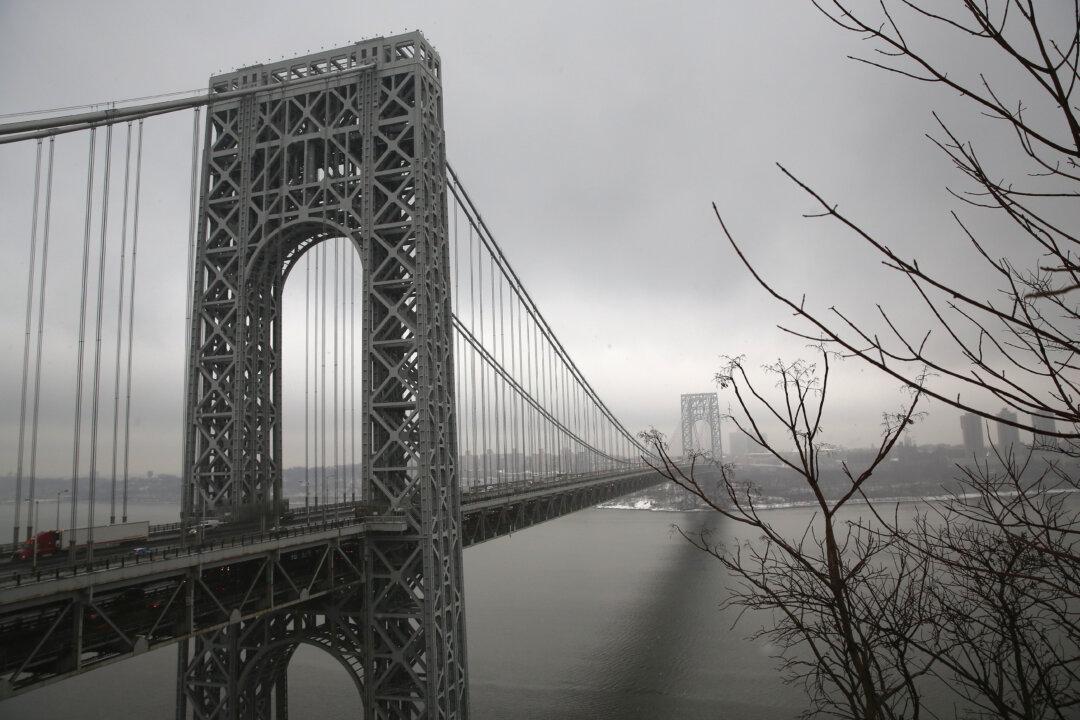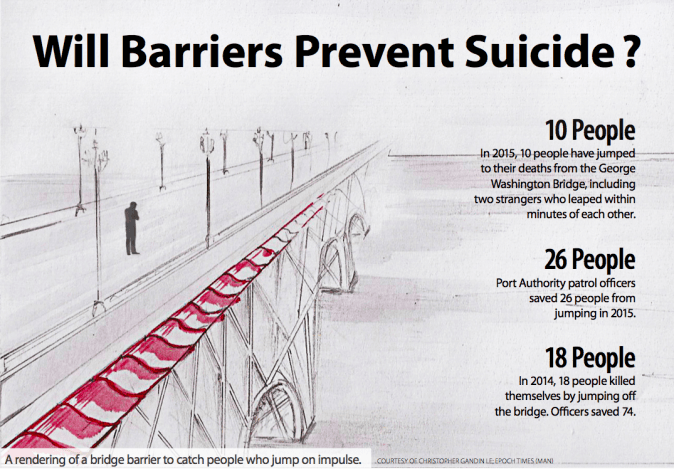NEW YORK—Over 100 million vehicles cross the George Washington Bridge each year. It’s the busiest automobile bridge in the world. Honking cars, buses, and trucks brake and thrust, brake and thrust. Yet amid the monotonous chaos, 10 people jumped to their deaths in 2015, including two strangers who leaped within minutes of each other.
The George Washington Bridge is not a beautiful place to die. The narrow walkway is filled with zooming cyclists, billowing plastic bags, rusty railings, and empty dulce de leche ice cream cups.
Yet many go there to do just that.
In 2014, bridge patrol officers saved 74 people from jumping off the bridge. This year, so far they’ve prevented 26.
Falling off the George Washington Bridge, or any bridge for the most part, is a painful way to kill oneself. Some jumpers do not land in the water. There’s crushed spines. And slow, internal bleeding. If a jumper does manage to plunge into the Hudson River, he or she needs several tedious inhales of mirky, green water before death arrives.
It is a problem that the Port Authority of New York & New Jersey has began grappling with in the last few years.
In 2014, the Port Authority worked with psychologists to develop a suicide intervention protocol, said Joseph Pentangelo, Port Authority’s senior police public information officer. It also sought advice from the Golden Gate Bridge Patrol, which has to deal with the highest bridge suicide rate in the world.
In addition to car patrols, the Port Authority has at least two patrol officers assigned to walk the bridge to look for pedestrians with signs of depression and disorientation. They talk to people, ask them how they’re doing.
But merely having officers patrol the bridge is not enough. Last year, 18 people jumped and died.
Last spring, the Port Authority approved a $47 million project to install a 9-foot fence along both sides of the mile-long crossing, but it won’t be completed until 2024.
The barriers are part of a larger vision to replace the bridge’s 592 suspender ropes, replace the north and south sidewalks, and provide enhanced pedestrian and bicycle access ramps.
It’s also a major engineering challenge to make sure the dimensions are right, a Port Authority representative said. If built incorrectly the fence would catch strong winds, which could cause the bridge deck to bend.
Suicide prevention activists argue that local governments throughout the United States should have begun working on creating bridge barriers sooner.
Port Authority officials told The Associated Press that it did not start recording annual suicide deaths until 2013, and only in recent years have suicides been a problem for them.
Bridge Aesthetics
Even in problem areas, for decades there has been a reluctance among U.S. municipalities to build bridge barriers.
Since the 1970s, activists have been pushing for the Golden Gate Bridge Highway and Transportation District to build suicide prevention fences or nets.
To date, there have been more than 1,600 suicide deaths from the Golden Gate Bridge since its creation in 1937. Yet the iconic San Francisco bridge still doesn’t have any barriers.
Critics of Golden Gate Bridge barriers said they would be pointless. Suicidal people will only go somewhere else. Why waste time and mar the beauty if they’re only going to go somewhere else?





